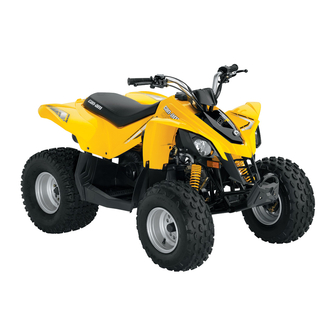
Can-Am DS70 Operator's Manual
Safety, vehicle and maintenance information
Hide thumbs
Also See for DS70:
- Operator's manual (144 pages) ,
- Operator's manual (136 pages) ,
- Operator's manual (140 pages)
Table of Contents
Advertisement
Quick Links
Advertisement
Table of Contents

















Need help?
Do you have a question about the DS70 and is the answer not in the manual?
Questions and answers
how mush engine oil does it take
The Can-Am DS70 requires 1.1 liters (1.2 U.S. quarts) of engine oil when changing the oil with the filter.
This answer is automatically generated